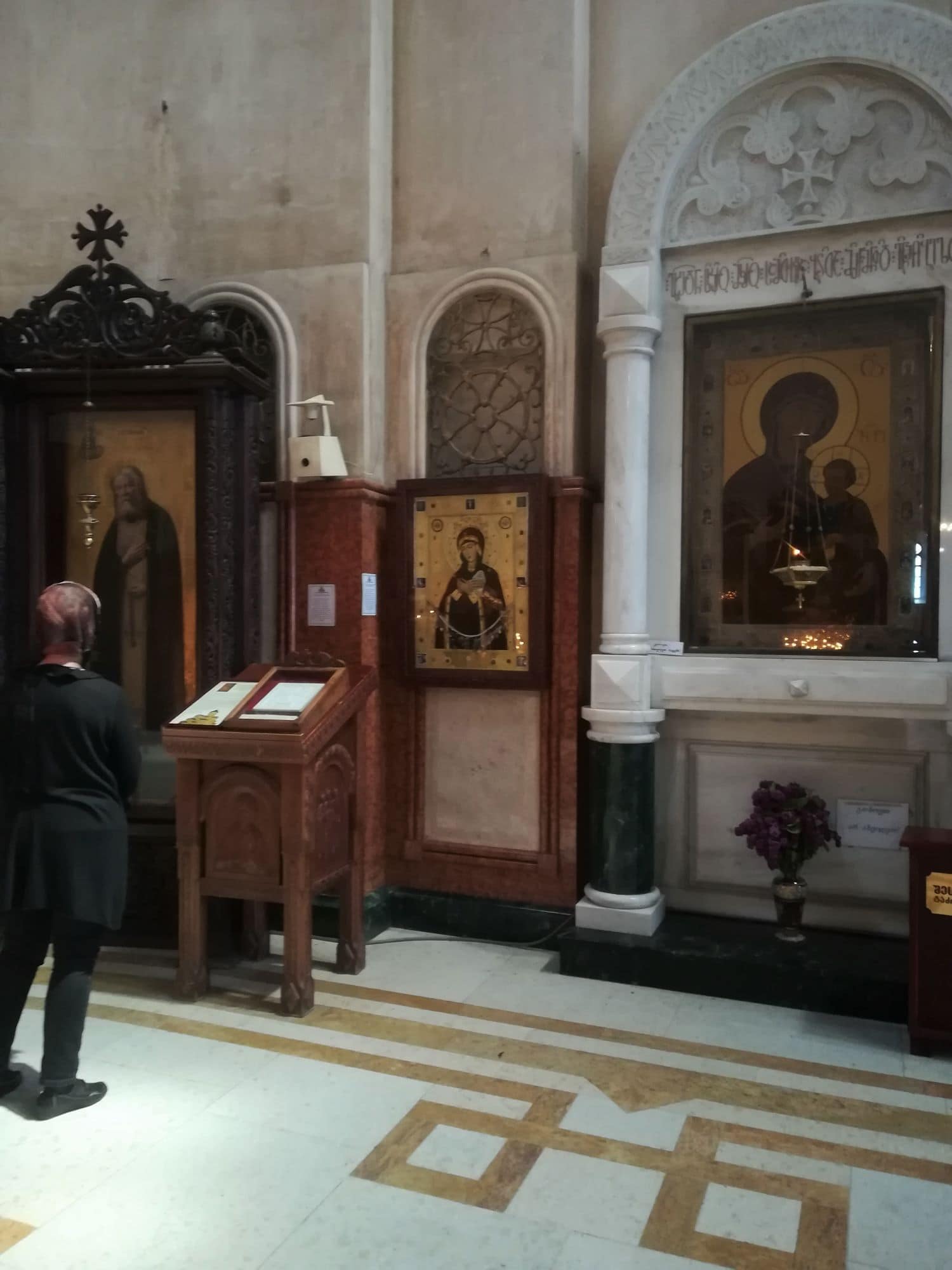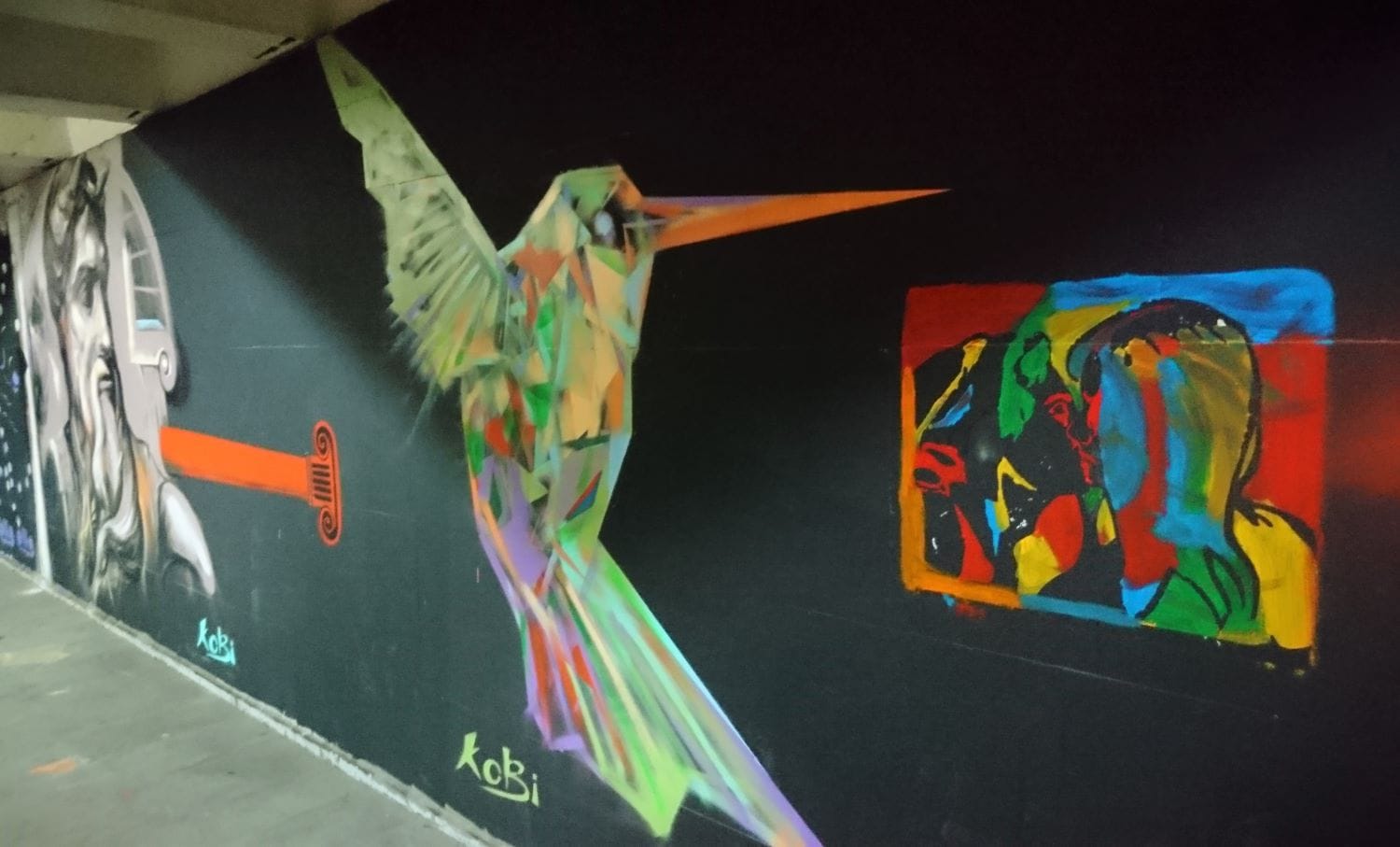The intriguing Georgian metropolis.
Tbilisi is the capital of Georgia and apparently the next tourist gem in the Caucasus, as Georgia recently started to focus on the development of its tourism infrastructure. When my boyfriend and I visited in May 2018, we were a bit surprised by how metropolitan and European Tbilisi seemed compared to the rest of Georgia, so I guess their efforts have paid off, in the capital at least. Tbilisi is currently still an intriguing blend of cultures and of the old and the new, so I hope they will not overdo it with renovations and modern architecture in the future and that its colourful historical charm will be preserved, as the city has quite a lot to offer (which is why this post will be quite photo heavy).
Today Tbilisi is famous for its colourful traditional houses, which you can see on the cover photo, and when we first arrived there was a festival of some kind going on at one of the main city squares, near the statue of king Vakhtang Gorgasali and the Meteki church, two must see sights. To make it even more adorable, even Georgia’s food is colourful, as Tbilisi is known for a sort of candy called churchkhela, which looks like a beady sausage or something even more kinky, but does in fact consist of nuts on a string, coated with numerous layers of thickened fruit or grape juice (you can see it on the third photo below).
First look at Tbilisi



The name Tbilisi comes from the Georgian word tbili, which means warm, and it was so named for its natural hot springs. The springs have been attracting visitors to the area since the 5th century, when a Georgian king decided to found a city there. Lots of the older bath structures are still preserved in Tbilisi’s old town today and you can enjoy a hot bath in a historical environment by going to one of the public bathhouses or renting a private one at the Royal baths, ranging from 5 to 50 € depending on the setting. Be forewarned though, the springs smell like rotten eggs due to the natural sulphur gas. I really wanted to try the famous Tbilisi bathhouses, but my boyfriend was firmly against it so in the end we didn’t go. They did look interesting from the outside too though.
Even if you’re not taking a bath, Tbilisi’s old town makes for a beautiful walk and the old brick buildings present an interesting contrast to the more modern parts of the city around them. The narrow old streets are full of interesting shops, restaurants and street performers at all times of day, so watch your step, because I once nearly walked face first into a giant parrot and I imagine it would’ve bitten off my nose with its giant beak (I’m not a fan of birds)… If you follow the river through the old town across a golden bridge, you’ll come upon the Leghvtakhevi waterfall streaming out of the natural rock wall and, if you look further up and around you, you’ll see the Narikala fortress and the Holy Trinity (Sameba) cathedral dominating the scenery. The two are some of Tbilisi’s unmissable attractions and can be seen from practically any point in Tbilisi.
Tbilisi’s old town









We first walked through the old town on a late May afternoon and as soon as we crossed into the historical section, we began hearing this strange noise. The longer we walked, the stronger and stranger it got, until we figured out it was coming from the river. When we got to the waterfall we realised the noise was coming from thousands upon thousands of little brown frogs croaking away into the dusk. You can hear them on the video below, but it doesn’t really do it justice, as the frog song was amplified by the tall walls of the river canal and echoed across the whole old town.
Besides the old town, Tbilisi prides itself on being the crossroads of many Eastern and Western cultures, so you’ll find Orthodox churches, mosques, Christian churches and synagogues all within minutes of each other, as well as too many museums to count. Since Georgia has an incredibly rich history, my archaeologist boyfriend dragged me to the Georgian National Museum, which was actually quite interesting. They had a great exhibition on the evolution of humans, with lots of skulls to observe the differences between the pre-Homo-Sapiens humanoids.
Another part of Tbilisi worth a mention is the area around the eclectic Gabriadze puppet theatre, which I suppose is the most artsy part of the city. Rezo Gabriadze is a famous Georgian puppet master, an all around artist and an interesting historical figure from the Soviet times, so check him out. Tbilisi’s puppet theatre is dedicated to him and features the famous leaning clock tower, which was one of my favourite sights of Georgia in general. The whole area is full of random artworks, sculptures, cafes and tiny craft shops, so it’s more than worth a visit.

As for the more modern parts of the city, the Freedom bridge is a rather unexpected feature and the Rustaveli avenue with its Freedom square is where Tbilisi’s governmental and business centre is located. Naturally, we also went up to the 4th century Narikala fortress and the Holy Trinity cathedral (one of the tallest Orthodox cathedrals in the world) that I mentioned earlier, which are certainly majestic sights, but didn’t impress me half as much as the little details of Tbilisi.
Impressions of Tbilisi
























We often wandered a bit out of the way while exploring Tbilisi, so we came across a ton of weird and adorable things we didn’t expect, like a staircase with the words “I love you” written in every possible language, including Slovenian.
Tbilisi really is a city to get lost in and it felt very safe and welcoming both during the day and at night. Our accommodation was quite nice as well, even though it was in a very derelict looking building, but there was a random screwdriver sticking out of the wall in the room, so we had a good laugh about that.

Another awesome feature of Tbilisi are the flea markets, particularly the large one around the Dry bridge, which basically spans across the whole bridge and its surrounding area everyday between 10am and 5pm. There’s lot of sellers with everything from imported Chinese cheaps to Soviet technology and war era memorabilia. It is a great way to pick up a curious, inexpensive souvenir and trying to bargain in Georgian is certainly an experience.
Flea market at the Dry bridge






Like all Georgian cities, Tbilisi also has a funicular, which goes up the top of the hill to the Mtatsminda amusement park. Mtatsminda is a weird combination of luxury leisure centre and an amusement park, with fancy clubs, shopping and roller coasters. Each adrenaline ride can be bought separately, so you don’t need to buy an expensive ticket and you can even walk around the park for free, which is what we did.
There’s a walkway overlooking the city, which goes from the Mtatsminda park to the iconic Mother Georgia statue (Kartlis Deda) and the Narikala fortress. It is usually mentioned as a way to walk up the Mtatsminda mountain, which is about 1.5 hours up, but if you are lazy like us, it’s best to take the funicular up the mountain and explore the park first, then walk down to the Narikala fortress and the statue. In this direction the path is mostly paved and downhill, but it really is about 2 hours or more, if you take your time to enjoy the view.

When we visited the path was in good condition, although some stairs might have crumbled here and there, and it was relatively easy to follow. There were almost no people anywhere though and the walkway takes its time following a curve above the city, so we were convinced we must have gotten lost several times and the start of the path is a bit hard to find from the Mtatsminda side. It starts near the road entrance to the park, where you’d drive up to if you arrived by car and there were no signposts, so you need to be a bit persistent, but it’s worth it for the great views. You will know when you’ve found it though, as it starts like a proper paved walkway with stairs heading down the mountain.
Mtatsminda amusement park and walkway to the Mother Georgia statue










On our last day in Tbilisi we visited the Botanical gardens, which were the only part of our visit to Tbilisi that was a bit disappointing. The gardens seemed nice enough, but we were visiting in May, so several parts were not particularly green at the time. We did get to see some babushkas passionately arguing gardening, so that was fun at least and the entrance ticket wasn’t expensive.
The botanical gardens



In the evening we splurged for a fancy Georgian meal at a restaurant in the city centre, which was amazing. I really liked Georgian cuisine in general, as they like to use sweeter spices like tarragon, dill and parsley, as well as garlic, pomegranate and lots of nuts, which makes for interesting and rich flavours. And they also use a lot of fresh cheese, so hurray! After dinner I stood in line for 15 minutes for a bubble waffle with ice cream, prepared by the slowest old lady ever in a tiny old kiosk, while my boyfriend was tearing his hair out because of the wait. To be fair, I really wanted that waffle, otherwise I would’ve left too.



Of course Tbilisi’s awesomeness doesn’t end here and there’s lots more that I didn’t mention, because this post is already long enough. Since we spent a couple of days in the city, I have way too many photos of all the quirky statues and the incredible street art, which was seriously one of the best I’d ever seen. So, instead of more words, here are more photos.
Tbilisi’s statues







Street art











THE Details of Tbilisi









Travel tips: All in all, Tbilisi was a great city to explore and should not be missed if you’re heading to Georgia. Despite their clearly visible efforts to promote tourism, the city still retains an authentic vibe and you can still get a taste for the ordinary Georgian life if you stroll a street or two away from the centre. As the capital, Tbilisi is also the entry point for flying into Georgia, although the airport in Kutaisi is often less expensive to get to from Europe. And like everywhere, all roads lead to the capital, so it has good train and public minibus connections if you want to go for day trips outside the city while staying in the same accommodation. I would recommend picking one of the many affordable hostels or hotels near the city centre though, as almost all sights in Tbilisi are within walking distance from the centre, so using public transport is just not worth the hassle.
Some photos by M. Zupan.



Share your thoughts with me